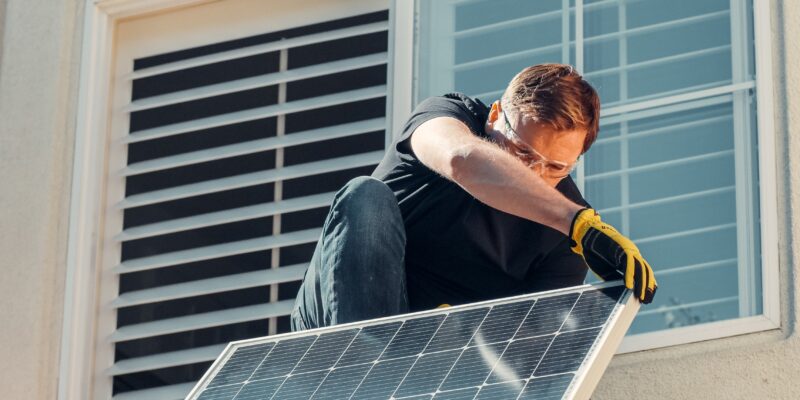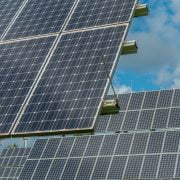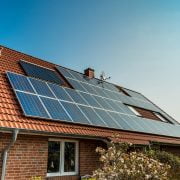In a world where sustainability and renewable energy are gaining increasing importance, more and more homeowners are turning to solar power as a viable and eco-friendly solution. Embracing solar power offers numerous benefits, including reduced reliance on fossil fuels, lower electricity bills and a smaller carbon footprint.
Evaluating the Feasibility
While solar power offers numerous benefits, such as energy savings and reduced environmental impact, several factors need consideration to determine if it is the right fit for your home. This evaluation process involves assessing average cost to install solar panels in Dallas or any other preferred location, available roof space, sun exposure and energy consumption.
While the cost of solar panel installations can vary based on several factors, including the size of the system and any additional equipment or services required, it’s helpful to have a general understanding of the average cost range. This cost estimate takes into account the size of the system, equipment, labor, permits and other installation-related expenses. It’s important to note that this cost can be influenced by factors such as the complexity of the installation, roof orientation, shading and any additional upgrades or customization you may opt for.
However, it’s crucial to consider the long-term benefits and potential savings that solar power can offer. While the initial installation cost may seem significant, solar panels can significantly reduce or even eliminate your monthly electricity bills over time. Also, homeowners can take advantage of various financial incentives, tax credits and utility programs that can help offset the upfront costs and make solar power more affordable.
Choosing the Right Solar System
Solar panels come in various types, including monocrystalline, polycrystalline and thin-film. Monocrystalline panels are known for their high efficiency and sleek appearance, while polycrystalline panels offer a more cost-effective option with slightly lower efficiency. Thin-film panels are flexible and lightweight, making them suitable for specific applications. Each type has its advantages, and selecting the one that aligns with your priorities and budget is essential.
Determining the appropriate size of your solar system depends on your energy consumption and available roof space. A professional installer can assess your historical energy usage and recommend a system size that meets your needs. Oversizing the system can result in unnecessary expenses, while undersizing may not cover your energy demands adequately. Also, it’s crucial to consider any future changes in energy usage, such as electric vehicle charging or home expansions, to ensure the system remains sufficient in the long run.
System efficiency refers to the amount of sunlight that solar panels can convert into usable electricity. Higher efficiency panels generate more electricity per square meter, maximizing the energy output from your system. However, higher efficiency panels often come at a higher cost. Evaluating the trade-off between efficiency and budget is essential to strike the right balance.
Maximizing Energy Efficiency
When adopting solar power for your home, one effective way to maximize energy efficiency is by combining solar power with strategic home upgrades. By implementing energy-saving measures, you can optimize the benefits of solar energy and further reduce your carbon footprint. Here are some key home upgrades to consider:
-
Energy-Efficient Appliances
Upgrading to energy-efficient appliances, such as refrigerators, air conditioners, and water heaters, can significantly reduce your overall energy consumption. Look for appliances with high Energy Star ratings to ensure optimal efficiency and savings.
-
Insulation and Weatherization
Improving your home’s insulation and weatherization helps minimize energy losses and maintain a comfortable indoor environment. Insulating walls, attics and floors, as well as sealing air leaks around doors and windows, can enhance energy efficiency and reduce the demand on your solar system.
-
LED Lighting
Replacing traditional incandescent bulbs with energy-efficient LED lighting is a simple and effective upgrade. LED bulbs use considerably less energy, last longer and provide better illumination, contributing to energy savings over time.
-
Smart Thermostats
Installing smart thermostats allows you to regulate your home’s temperature more efficiently. These devices learn your preferences, adjust temperatures based on occupancy and can be controlled remotely, optimizing energy usage and maximizing comfort.
-
Energy Monitoring Systems
Integrating energy monitoring systems enables you to track and analyze your energy consumption in real-time. This data empowers you to make informed decisions about energy usage, identify areas for improvement and maximize the efficiency of your solar system.
-
Solar Battery Storage
Adding battery storage to your solar system allows you to store excess energy generated during the day for use during evenings or cloudy days. This enhances self-consumption, reduces reliance on the grid and maximizes the value and efficiency of your solar investment.
By combining solar power with these home upgrades, you create a comprehensive energy-efficient ecosystem within your home. The synergy between solar power and energy-saving measures enables you to further reduce your reliance on non-renewable energy sources, lower your utility bills and contribute to a more sustainable lifestyle.








Comments